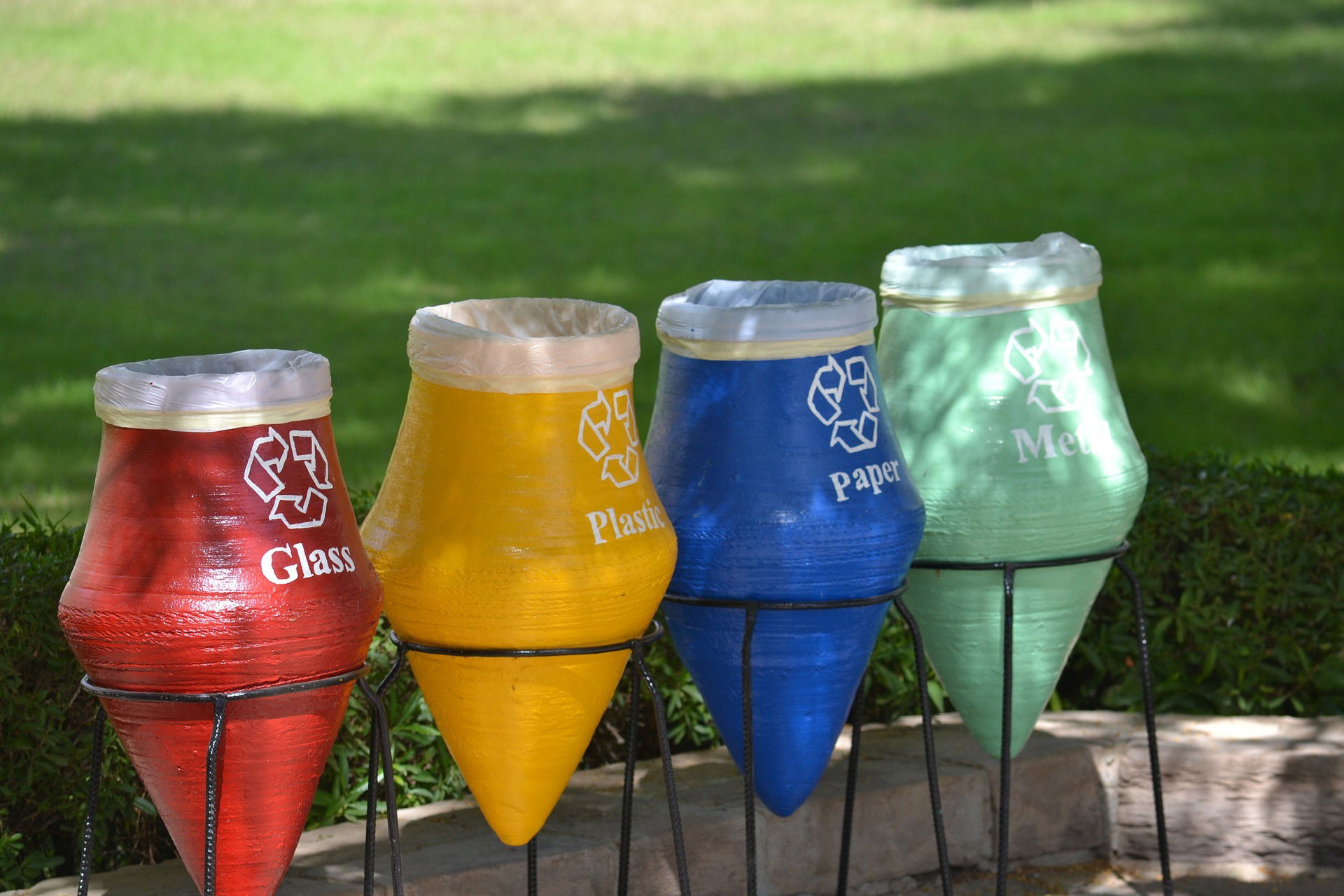Eco-Friendly Painting: Waste Management and Paint Disposal

Why Is Waste Management Important in Painting Projects?
Waste management is a crucial part of any eco-friendly painting project. With leftover paint, empty cans, and solvent waste, painting can generate more waste than many realize. If not handled properly, it can harm the environment through groundwater contamination, toxic fumes, and increased landfill waste. Managing paint disposal effectively isn’t just about following regulations—it's about doing our part to protect the planet.
What Are the Key Principles of Eco-Friendly Paint Disposal?
Eco-friendly paint disposal focuses on the 3Rs: Reduce, Reuse, and Recycle. Here’s how each plays a role:
- Reduce: Purchase only the amount of paint you need to minimize leftover material.
- Reuse: Store paint correctly to reuse it later or donate it to someone who can.
- Recycle: Recycle paint containers and look for local paint recycling programs.
By adopting these practices, we can significantly cut down on the waste produced from painting jobs.
How Can You Minimize Paint Waste on the Job?
One of the easiest ways to reduce paint waste is through accurate estimating. Buying the right quantity ensures fewer leftovers. Here are some tips to keep waste under control:
- Use paint calculators: Tools like online paint calculators help you determine exactly how much paint is needed.
- Opt for quality over quantity: High-quality paints often require fewer coats, reducing overall usage.
- Batch your projects: Grouping smaller painting projects ensures leftover paint from one task gets used in another.
These strategies reduce the likelihood of having excess paint, which otherwise might end up in landfills.
What Should You Do with Leftover Paint?
If you have leftover paint, throwing it away should be the last resort. Here are eco-friendly ways to handle unused paint:
- Store it properly: Keep paint cans sealed tightly and store them in a cool, dry place to extend their shelf life.
- Donate it: Organizations like schools, community centers, or theater groups often accept paint donations.
- Repurpose creatively: Use small amounts of leftover paint for touch-ups, accent walls, or craft projects.
If the paint is in good condition, these methods ensure it doesn’t go to waste.
Where Can You Recycle Paint and Containers?
Many local governments and nonprofits offer paint recycling programs. In Oregon, for example, the PaintCare program allows homeowners and businesses to drop off unused paint at participating locations. Here’s a quick guide on what you can do:
| Type of Waste | Disposal Option |
|---|---|
| Latex Paint | Recycled or remixed into new products |
| Oil-Based Paint | Hazardous waste collection centers |
| Empty Paint Cans | Local recycling programs |
Using these recycling options prevents paint from ending up in landfills, where it could leak into the soil and water.
What Are the Best Practices for Cleaning Painting Tools?
Solvents like mineral spirits and paint thinners used in cleaning brushes and rollers can be harmful if not disposed of properly. Here’s how to handle these responsibly:
- Use water-based paints whenever possible: They require only soap and water for cleanup, reducing chemical waste.
- Reuse solvents: Allow used solvents to settle; pour off the clear portion for reuse.
- Dispose of solvents safely: Take remaining sludge to hazardous waste facilities.
These practices cut down on toxic waste and encourage sustainable tool management.
How Can Paint Disposal Laws Impact Your Project?
Different states have varying regulations for paint disposal. For example, in Oregon, oil-based paints are treated as hazardous waste and must be disposed of at designated centers. Not following these guidelines could result in fines and environmental damage. Staying informed about local laws ensures compliance and helps your business avoid unnecessary penalties.
How Can Painters Promote Sustainable Practices?
As painting professionals, we have the opportunity to set a positive example. Here are some ways to integrate eco-friendly practices into your business:
- Offer green painting options: Promote eco-friendly paints with low-VOC or zero-VOC formulations.
- Educate clients: Share tips on paint disposal and eco-friendly maintenance.
- Partner with recycling programs: Collaborate with organizations that facilitate responsible paint disposal.
Implementing sustainable practices builds trust with clients and showcases your commitment to the environment.
Small Changes Lead to Big Impacts
Eco-friendly painting isn’t just about using the right products—it's also about responsible waste management and paint disposal. By adopting sustainable practices like accurate estimating, recycling, and partnering with disposal programs, painters can significantly reduce their environmental footprint.
Do You Have Questions? Give Us A Call With Any & All! 503-389-5758
-
People Also Ask:
How can I minimize paint waste during my painting project?
To minimize paint waste, accurately calculate the amount of paint needed using online calculators or professional advice, choose high-quality, reusable painting tools, and apply efficient painting techniques. Opting for eco-friendly paints and properly storing leftover paint for future use or donating it to community projects can also reduce waste.
What are some environmentally friendly alternatives for cleaning paint equipment?
Environmentally friendly alternatives for cleaning paint equipment include using water-based paints, which can be cleaned with soap and water, and biodegradable cleaners for oil-based paints. Additionally, investing in high-quality, washable tools that can be reused across projects minimizes waste and environmental impact.
How do I properly dispose of leftover paint and hazardous painting materials?
Proper disposal of leftover paint and hazardous materials involves adhering to local disposal regulations, utilizing designated hazardous waste collection services, and participating in paint recycling programs. Ensure that hazardous waste is stored in appropriate containers, correctly labeled, and never disposed of in regular trash or drains to prevent environmental contamination.
-
SUBSCRIBE TO OUR BLOG: Stay informed with the latest in Painting and DIY projects by subscribing to Lightmen painting. Get insights, tips, and more delivered straight to your inbox. We would also love to know what you would like to read about, leave thoughts on where we should go next. Interests, Topics, Ideas, all are welcome.
"Eco-friendly painting is more than a practice; it's a reflection of our respect for nature and commitment to the future. Like the time I repurposed leftover paint for a creative art project, it taught me that what we consider 'waste' can often be transformed into something beautiful and meaningful. Each responsible choice in waste management and paint disposal is a brushstroke on the canvas of environmental stewardship. Embrace the challenge of sustainability not as a burden, but as an opportunity to innovate and inspire. Your actions, no matter how small, contribute to a larger picture – a world where art and nature coexist in harmony."
Get $3000 in assistant credits from Magic.com
^ Click Our Logo Above ^
If your in the Portland, Or. area and need advice or a free no obligation estimate call us at 503-389-5758 or email scheduling@lightmenpainting.com
Shout Out
Costimates - Budgeting for Exterior Painting Projects
At Lightmen Painting, we understand the importance of transparent pricing. Costimates offers clear estimates to help homeowners budget for exterior painting projects, with costs for an average home ranging from $3,600 to $6,900. Whether you're planning a small refresh or a full exterior overhaul, knowing the costs upfront helps you make informed decisions. For more details, visit Costimates.
Thanks for stopping by Lightmen Daily! Stay tuned for more practical tips and expert advice on making your painting projects flawless, from wall to floor!
Definitions
- Performance and Customer Satisfaction: SuperPaint has been tested in various climates and received high satisfaction from customers for its coverage, longevity, and color retention.
- Key Features: Its weather resistance, advanced acrylic resin technology, and ease of application are highlighted as key features that contribute to its standout performance.
- Durability and Protective Qualities: SuperPaint offers exceptional durability, resistance to dirt and mildew, and long-lasting color, ensuring that exterior surfaces remain pristine and vibrant over time.
- Color Options and Aesthetic Impact: With a wide range of color options, SuperPaint enhances a home's curb appeal and visual impact, allowing homeowners to choose shades that complement their style and surroundings.
- Practical Benefits for Homeowners: SuperPaint is cost-effective in the long run, requiring less maintenance and offering reduced frequency of touch-ups compared to other paints.
- Consumer Reviews and Market Reception: Consumer feedback generally reflects high satisfaction with SuperPaint's performance, with some users noting its upfront cost as a potential drawback.
- Comparisons with Competing Products: SuperPaint often exceeds competitors in terms of weather resistance, durability, and color retention, making it a preferred choice for many homeowners.
- Final Recommendation: Based on its comprehensive performance metrics and consumer feedback, SuperPaint Exterior Acrylic Latex is highly recommended for homeowners seeking a reliable, high-quality paint for their exterior projects.
Lightmen Painting Serving: Portland, Tigard, Lake Oswego, Tualatin, West Linn, Milwaukie, Sherwood, Happy Valley, Oregon City, Beaverton, Hillsboro, Gresham -Trade Partners-
